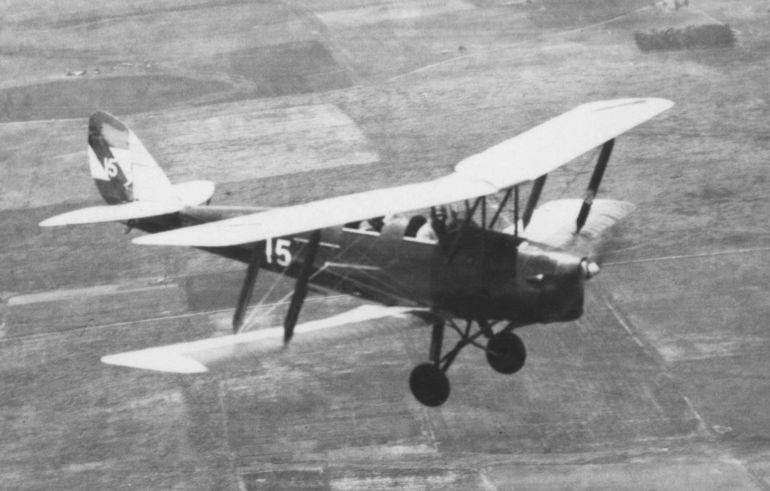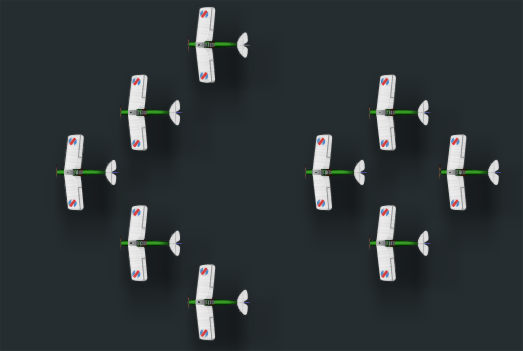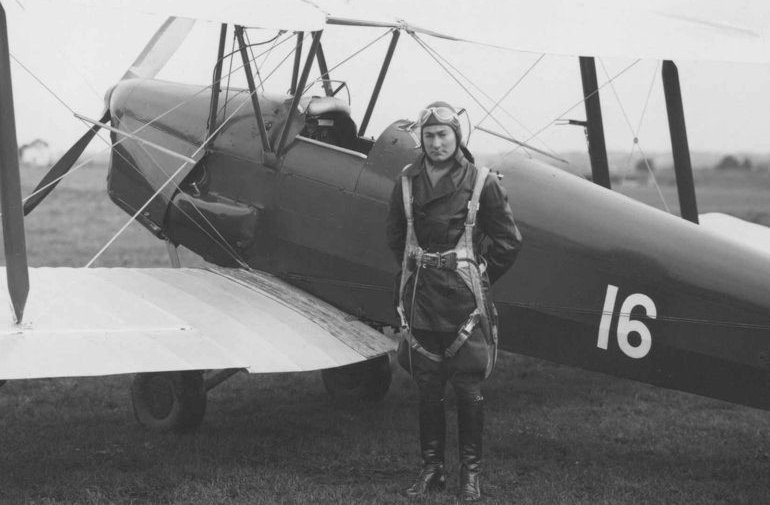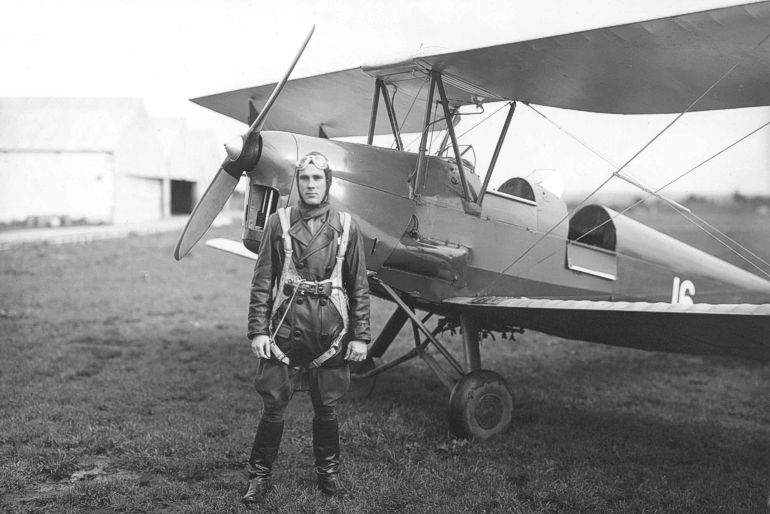|
Service
history
1940
At the beginning of 1940, the Tiger Moth fleet was composed of 14
aeroplanes, of which nine were assigned to the EMAer (2, 5, 6, 8, 9,
11, 12, 13 and 14); two to the A.B.No 1 (4 and 15); two to the
A.B.No 2 (16 and 17), whilst No 3 continued in the Service Division.
With the exception of the already noted No 14, all the rest were in
flying order.
On February
25, during the course of an air festival in Melilla, there was an
incident which could have had far more serious consequences. Flying
over the event, Tiger Moth 16, piloted by Lieut. Col. Farias,
suffered engine failure and in the subsequent forced landing could
not avoid contact with some of the spectators.
The end result
was more than fortunate: the pilot was unharmed and various
spectators suffered only slight injuries but the aeroplane was out
of action for two months.

DH82A 15 (c/n 3617) of the Aeronautical Base No1, December 1940.
- FAU Archive 2323.
In July, effective possession was finally taken of Durazno Airfield
with the transfer of the first contingent of personnel and
equipment, establishing Aeronautical Base No 2 there. Its aircraft
equipment at that time consisted of the Ro.37 bis 1 and 5, the Potez
25 1 and 10 and DH82As 16, 17 and 2, this last having come from the
EMAer, reassigned to this Base.
The air display on July 25th included a formation of 9 Tiger Moths
under command of Lieut. Col. Farias, flying No 9.

Apart from the
regular courses for qualifying pilots of the Military Aeronautics,
the three Marine Guards, who had begun their training the previous
year, continued to fly in the DH82A for the whole year. Then in
September three more pupils from the Navy were integrated; the
Marine Guards Gastón Larrañaga, Jorge Canfield and Carlos Mari, who
would all complete their First Solo Flights in a Tiger Moth towards
the end of November.
Sadly, on
October 28, another fatal accident occurred at the EMAer.
During a
training flight in No 11, Junior Lieutenants Omar Soto and Walter
Altesor did not recover from a spin started at a low altitude and
both died in the impact. The aircraft wreckage was salvaged, rebuilt
and after a year flew again.
At the end of
November there was an incident involving Col. Cesáreo Berisso, then
Inspector of Aeronautical Arms.
On 29th
November, returning from a navigation exercise B. Lanza to Santa
Teresa to B. Lanza and carrying as passenger, Lieut. Col. Julio
Botta (a member of the military staff from outside the Arms
Inspectorate), had to make a forced landing in the proximity of San
Carlos when the aircraft ran out of fuel. Both occupants of the
aircraft were unharmed and aeroplane 16, which suffered minor
damage, would be repaired by the end of February 1941. We note this
happening because Colonel Berisso was not accustomed to flying the
Tiger Moth, this being one of the few flights he made in the
aircraft.
At the end of
the year, the total time flown by the DH82A fleet registered a
slight increase of 23 hours over that of the year before, reaching
2,932.

Pupils of the Pilot´s Course for Officers of 1940,
Lieuts. Jr.
Jose Perez Caldas and Luis Alfaro posing in the Capt .Boiso Lanza
Military Aerodrome opposite No 16 of Aeronautical Base No 2 equipped
with bomb-racks. Note that the serial lacks the prefix AU B2 which
should be exhibited.
Archives
FAU 2292 and 2293.

|